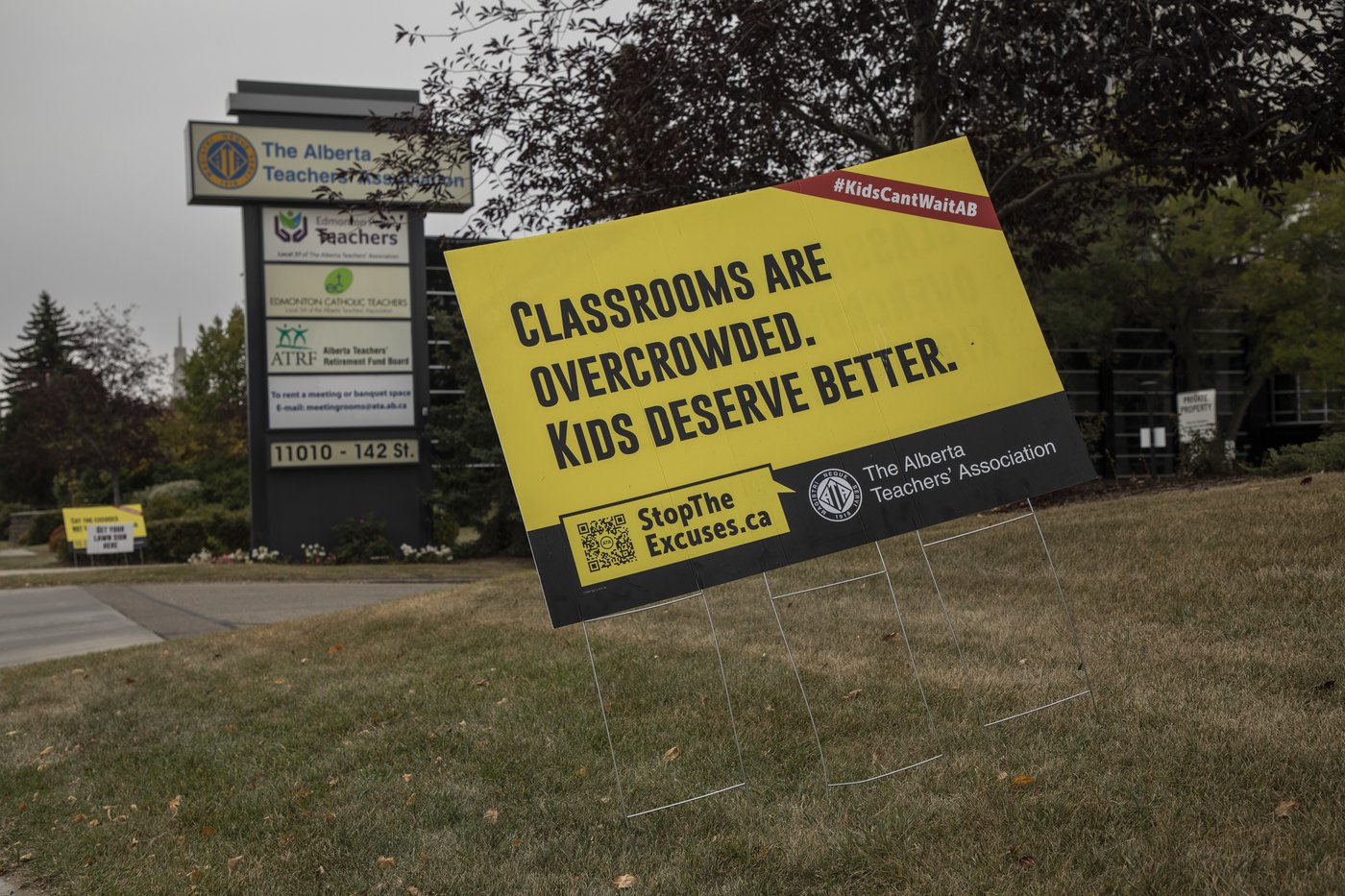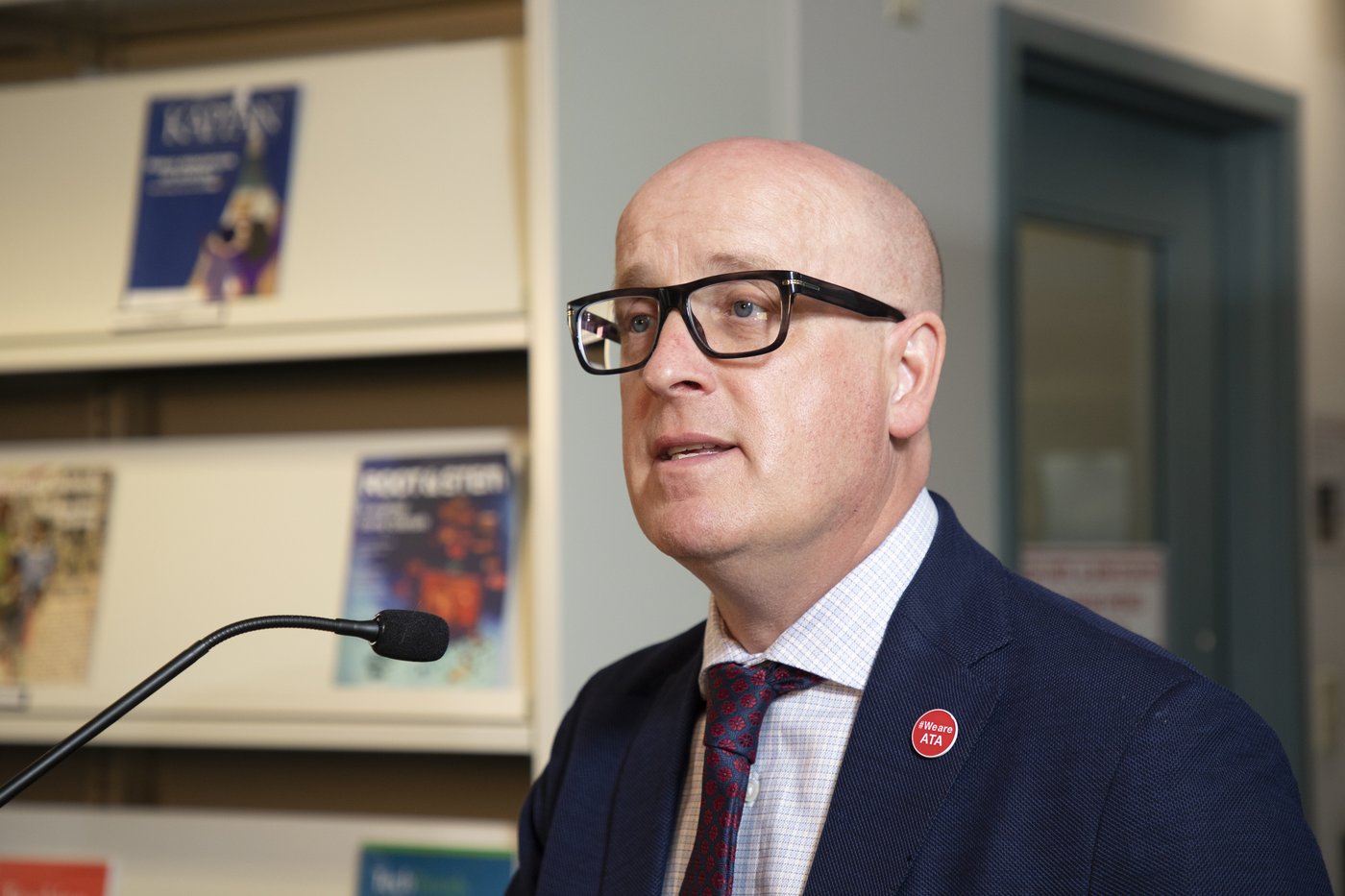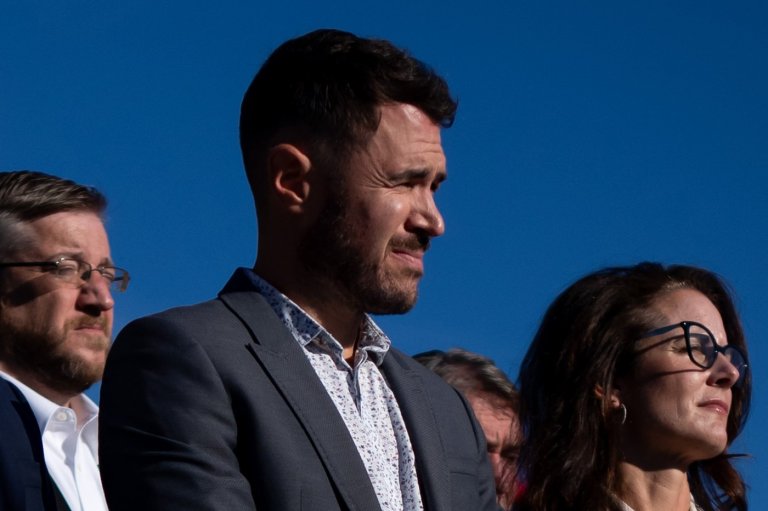Alberta teachers reject government request to end strike and enter mediation

EDMONTON — Alberta Premier Danielle Smith said Friday she’s disappointed the union representing teachers turned down a government request to end a provincewide strike and to go through enhanced mediation.
Alberta Teachers’ Association president Jason Schilling said the request came in a letter Thursday for schools to reopen on Monday.
Schilling said the proposal left him and the union feeling “insulted,” as it vetoed discussion of caps on classroom sizes — a main sticking point in the contract dispute.
“This limitation undermines any attempt at resolution,” Schilling said.
Smith told reporters the government’s proposal put students and families first, and she’s saddened the union shot it down.
“It’s hurting students and families and for that matter, teachers,” she said.
The government letter, released by the union, says the proposal came out of concern for how “extremely far apart” the two sides are and the “unacceptable state of affairs” the dispute has caused.
It says enhanced mediation would last a month, after which the mediator would put non-binding terms to both parties for review.
The strike by 51,000 teachers, the largest walkout in Alberta’s history, has shuttered schools for two weeks for about 740,000 students.
Schilling said teachers aren’t willing to back down on their demands, which also include higher wages than what has been previously offered.
He didn’t rule out the possibility of ending the strike if the province changes the terms of mediation. But Smith said the idea of caps is “problematic” and not something school boards want either.
Smith has questioned the feasibility of class size limits, though a number of other provinces have some form of cap or targeted cap, including Manitoba, British Columbia, Ontario and Saskatchewan.
Smith said earlier this week and again Friday that the number of working teachers and student enrolment figures in Alberta means there should be 21 children in each class.
Teachers say they regularly have more than 30 students in their classrooms and are stretched too thin.
Schilling said Smith’s calculation is “an interesting way to do math.”
“You’re not accounting for population density, you’re not accounting for the number of students that are in urban centres,” he said.
“It would be, for example, taking the entire population of Alberta divided by the number of towns and say that’s how many people live in every town.”
Caps in other provinces range from targets to hard limits for certain grades or classes. Newfoundland and Labrador, for example, limits classes in grades 1-3 at 25 students. If an education assistant is in a class, the cap is raised to 27.
The Alberta government’s bargaining committee and the teachers’ association met Tuesday — for the first time since the Oct. 6 walkout — to discuss a new proposal put forward by the union. Formal talks haven’t resumed since.
Finance Minister Nate Horner said this week the union “shot for the moon” with a proposal that would require the province spend $2 billion more than the $2.6 billion it has set aside over four years for a deal.
Smith said the union’s $4.6 billion ask isn’t something the province can afford.
“Our province is facing a $6.5 billion budget deficit this year and we must continue to be responsible stewards of taxpayer dollars,” she said.
A contract offer sent to a vote last month included a 12 per cent salary bump over four years and a government promise to hire 3,000 more teachers to address class sizes. Teachers overwhelmingly rejected the offer.
Opposition NDP education critic Amanda Chapman said the United Conservative Party government’s request to end the strike in favour of another round of mediation is “ridiculous.”
“The letter makes it perfectly clear that the government is not interested in bargaining in good faith,” she said. “I think it’s time for the UCP to cut the crap.”
Smith said if the strike is still on by Oct. 27, when the legislative assembly returns, teachers can “fully expect” to be legislated back to work.
“We think that three weeks is about the limit of what students can handle before we’d start seeing irreparable harm.”
The premier said the government would prefer to negotiate a deal, but past unsuccessful contract votes and the union’s recent rejection of mediation doesn’t inspire much confidence.
“We live in hope, but we’re planning for the other option.”
Schilling said back-to-work legislation wouldn’t intimidate teachers, whom he described as “strong and free” — mocking the government’s announcement this week of its new licence plate slogan.
The strike has had other impacts, including strained businesses, children missing out on school meals, stalled university student practicums and paused sports seasons.
The government said diploma exams scheduled for November would be optional and students won’t be negatively affected if they don’t take them.
This report by The Canadian Press was first published Oct. 17, 2025.

Join the Conversation!
Want to share your thoughts, add context, or connect with others in your community?
You must be logged in to post a comment.



















